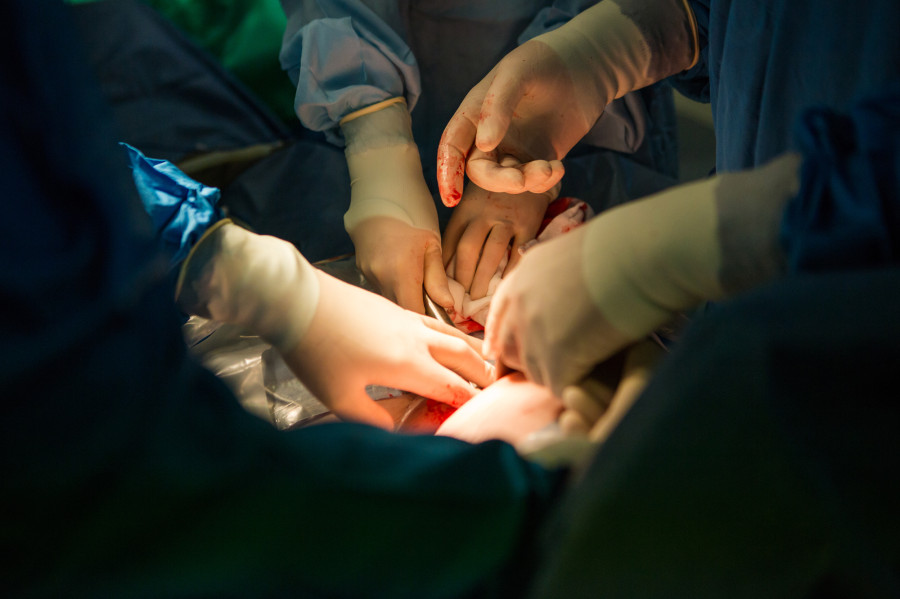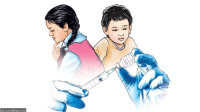Health
Caesarean section delivery service to be expanded to all 77 districts
It is estimated that close to 15 percent of pregnant women suffer serious complications during childbirth.
Arjun Poudel
In a bid to prevent maternal deaths during childbirth, the Ministry of Health and Population has been working to expand caesarean section delivery service to all of Nepal’s districts from the ongoing fiscal year.
Officials said that all the preparations to expand the service have been completed.
“We have allocated the required budget, provided advanced Skilled Birth Attendance (SBA) training to health workers, hired anaesthetic assistants, and gynaecologists and have also trained and prepared operation nurses to start the service,” said Nisha Joshi, a public health administrator at the Family Welfare Division. “Services will soon start in the districts that have so far been unable to provide caesarean delivery.”
Caesarean section delivery, also known as C-section, is a major procedure of emergency obstetric care. Of the country’s 77 districts, only Rasuwa, Manang, Mustang, and Rukum (East) lack the service. It is estimated that close to 15 percent of pregnant women suffer serious complications during childbirth.
Maternal health experts say lack of C-section deliveries at hospitals has put the lives of many expecting mothers and their babies at risk. Lack of the service at their home district means women have to travel to cities for the service, which adds to their costs and is not affordable to all.
According to Dr Aruna Karki, a consultant gynaecologist, excessive bleeding after childbirth, and pre-eclampsia and eclampsia, two pregnancy-related high blood pressure disorders, are some of the major causes of maternal deaths in Nepal.
“There are several other conditions in which C-section deliveries are needed,” Karki said. “If surgeries are not done in time, both the mother and the unborn will be at risk.”
C-section delivery is needed if the expecting mother’s first baby was delivered through C-section, if the baby is in abnormal position, if the baby doesn't change position even after approaching the due date, when the labour pain is prolonged, and in cases of foetal distress, birth defects, chronic health condition in mother, and prolapsed cord and placenta, among other reasons.
Dr Bishnu Chaulagain, a maternal and child health expert, said that it is imperative C-section delivery service be made available in all districts across the country. “Availability of the service in all districts helps to prevent mortality and morbidity not only of the mother but also of the newborn,” Chaulagain said.
The Health Ministry said that 99 women have died due to complications related to pregnancy as of March end so far this fiscal year. In the previous fiscal year 2020-21, a total of 175 women died due to birth-related complications.
Experts say that the service should be made available at the time of need but should not be promoted if there is no need.
Data from the Health Ministry shows, of the total deliveries in the country, around 33.5 percent are through the caesarean section.
Data from private health facilities in Nepal point to an alarming caesarean delivery rate —an average of over 80 percent c-section deliveries, with some hospitals recording more than 95 percent caesarean delivery rate.
“Women and their babies are dying in some places due to lack of C-section services in our country and in some places, services are being provided even if there is no medical need,” said Chaulagain, who is also an assistant professor at the Department of Public Health, Institute of Medicine. “Unnecessary surgical procedures can be risky to both the mother and her baby.”
The World Health Organisation recommends that a caesarean section should only be performed when there is an absolute medical necessity.
Karki, who has been serving at Kathmandu Model Hospital, concedes that the percentage of C-section deliveries in big hospitals is high as it is chosen by both the mother and doctors.
“We can debate if the percentage of C-section deliveries performed at big hospitals and in cities is okay but the service should be made available in all districts of the country,” said Karki. “An effective monitoring and review mechanism should be developed to determine if C-section was needed or not.”
Nepal made remarkable progress in reducing the maternal mortality rate between 1996 and 2016, bringing it down from 539 per 100,000 births to 239. The country even received the Millennium Development Goals award for that achievement.
However, the progress thereafter is not visible.
Nepal has to reduce maternal mortality rate by 116 per 100,000 births within this year to meet one of the Sustainable Development Goals. The country has already missed its own 2020 target to bring maternal mortality rate down to 125 per 100,000 births. The target under the UN’s Sustainable Development Goals is to reduce the maternal mortality rate to 75 for every 100,000 births by 2030.




 9.12°C Kathmandu
9.12°C Kathmandu














